Respiratory protection is a critical part of ensuring workplace safety in industrial settings, where employees may be exposed to various airborne hazards. Regulatory bodies and safety standards play a pivotal role in establishing guidelines for the proper use of industrial respirators. This blog will provide an overview of the key regulatory bodies and standards, offer a compliance checklist, and discuss the impact of non-compliance, including legal ramifications in industrial settings.
Overview of Regulatory Bodies and Standards
Occupational Safety and Health Administration (OSHA):Role: OSHA, a part of the United States Department of Labor, sets and enforces standards to ensure safe and healthful working conditions.
Relevant Standard: 29 CFR 1910.134 outlines the requirements for respiratory protection.
To read in detail about OSHA standards (https://www.osha.gov/laws-regs/regulations/standardnumber/1910/1910.134).
National Institute for Occupational Safety and Health (NIOSH):Role: NIOSH is a federal agency focused on research and recommendations for preventing work-related injuries and illnesses.
Relevant Standard: NIOSH certifies respirators based on their performance and adherence to specified standards.
You can read our BLOG about NIOSH & CE Certifications for more details.
American National Standards Institute (ANSI):Role: ANSI facilitates the development of voluntary consensus standards for various industries.
Relevant Standard: ANSI/ASSE Z88.2 provides guidance on the proper use of respiratory protection devices.
Role: EPA regulates the use of respirators in the context of pesticides and other environmental hazards.
Compliance Checklist and Steps
Ensuring compliance with safety standards is crucial for protecting workers and maintaining a safe work environment. OSHA Compliance Guide for Respiratory Protection
Here's a checklist and steps to follow:
Compliance Checklist:
Assessment of Hazards:Identify and assess workplace hazards that may require the use of respirators.
Classify the type and level of respiratory protection needed based on hazard evaluation.
Respirator Selection:
Choose respirators certified by NIOSH for the identified hazards.
Ensure respirators are appropriate for the specific contaminants and concentrations present in the workplace.
Fit Testing:
Conduct fit testing for each employee to ensure a proper and secure fit.
Follow OSHA guidelines for both qualitative and quantitative fit testing methods.
Training and Education:
Provide comprehensive training on proper respirator use, including putting on and removing the respirator, limitations, and maintenance.
Educate employees on the importance of a good seal and the risks associated with non-compliance.
Maintenance and Inspection:
Establish a routine inspection schedule for respirators.
Regularly check seals, straps, valves, and other components for wear or damage.
Ensure employees undergo medical evaluations to determine their ability to use a respirator without exacerbating existing health conditions.
Written Respiratory Protection Program:
Develop and implement a written respiratory protection program as required by OSHA standards.
Include procedures for selecting respirators, medical evaluations, fit testing, and training.
Compliance Guide for Respiratory Protection Standard by OSHA (https://www.osha.gov/sites/default/files/publications/3384small-entity-for-respiratory-protection-standard-rev.pdf)
Steps for Ensuring Adherence:
Establish a Respiratory Protection Program:Develop a comprehensive written program that addresses all aspects of respirator usage.
Assign responsibilities for program implementation and oversight.
Provide Adequate Training:
Train employees on the specific hazards they may encounter and the proper use of respirators.
Conduct regular refresher training sessions to reinforce knowledge.
Regularly Update Program:
Stay informed about changes in workplace conditions and respiratory hazards.
Update the respiratory protection program accordingly.
Encourage Employee Involvement:
Foster a culture of safety where employees actively participate in the respiratory protection program.
Encourage feedback and address concerns promptly.
Enforce Compliance:
Establish consequences for non-compliance with respiratory protection policies.
Regularly audit and enforce adherence to the established program.
Impact of Non-Compliance and Legal Ramifications
Failure to comply with respiratory protection standards can have severe consequences for both employees and employers. The impact includes:
Health Risks:Exposure to hazardous airborne contaminants can lead to respiratory illnesses, lung damage, and other health issues.
Legal Consequences:
Non-compliance may result in OSHA citations and penalties.
Legal actions, including lawsuits, can be pursued by affected employees.
Workplace Disruption:
Non-compliance may lead to work stoppages or disruptions as authorities intervene to address safety concerns.
Reputation Damage:
Companies that fail to prioritize safety may suffer reputational damage, impacting their relationships with clients, partners, and the public.
Financial Implications:
Fines and penalties associated with non-compliance can have significant financial implications for businesses.
Read more about the penalties and fines imposed by OSHA upon non-compliance HERE.
In summary, adherence to industrial respiratory protection standards is not just a regulatory requirement but a fundamental aspect of ensuring the well-being of employees and the overall success of a business. Establishing a robust respiratory protection program and consistently enforcing compliance are essential steps in creating a safe and healthy work environment. By prioritizing respiratory safety, businesses can protect their most valuable asset—their workforce.





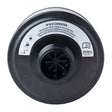
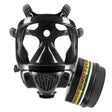
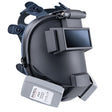
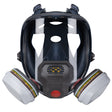
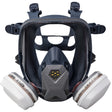
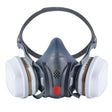


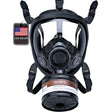
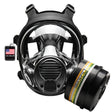
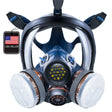
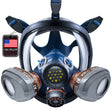
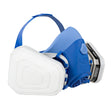
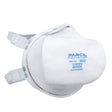
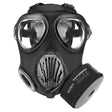
Leave a comment
All comments are moderated before being published.
This site is protected by hCaptcha and the hCaptcha Privacy Policy and Terms of Service apply.